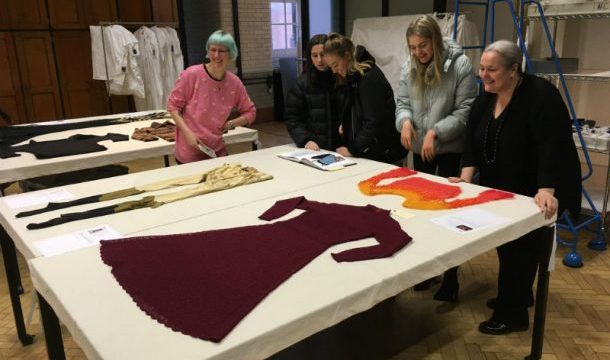If you’re reading this, then you can probably guess how difficult it must be to interpret, unlock and care for the collections of the V&A. The amazing eclecticism and range possessed by our objects means that public access to objects and resources, and the provision of information about them, is of great importance if they are to be well-understood by our visitors.
In addition to permanent displays and temporary exhibitions, the Museum offers many ways in which to access its collections. Among these are the National Art Library, depository for the nation’s art books; the Prints and Drawings Study Room, for the close inspection of 2D works; the Clothworkers’ Centre, about which I have said much; collections appointments for close study in store; the online journal, and other resources; and a full public programme of gallery talks, lectures and other methods of public engagement.

2010: the units in Gallery 100, their former home © Victoria & Albert Museum, London
Our long-term visitors will remember the nine wood and brass study frames, probably dating from the 1950s, which formerly inhabited the now-closed Textile Study Galleries on the third floor of the museum. Each unit held 160 textiles, 80 on each side, inside wood and glass frames with lovely brass handles, which could be removed and balanced on easels so that they might be contemplated with unusual closeness. Unsurprisingly, this made them enormously popular with members of textile societies, who could supplement literary sources with actual close object-study.

Several framed textiles from the old units © Victoria & Albert Museum, London
Their old home has since been reborn as a photographs gallery, though the popularity of the frames with visitors has endured, and we still field weekly enquiries concerning their whereabouts. Happily, as can be seen from the photos, one of the nine has survived and re-homed at the Clothworkers’ Centre.

The unit in its new home in the Clothworkers’ Centre study room © Victoria & Albert Museum, London

One of the frames containing our oldest dated embroidered sampler (T.190-1960) © Victoria & Albert Museum, London
This unit was refurbished by Museum Technicians and by contractors, the glass replaced by clear plastic, and the selection of textiles re-curated to better reflect the breadth of the collections stored at Blythe House. It was retained as an interesting museum piece, rather than out of sentimentality, and is something of a bonus opportunity for our visitors to take away extra knowledge from a study appointment.

A jar of pins, all taken from the textiles previously stitched to the boards of all nine units © Victoria & Albert Museum, London
Cabinet refurbished thanks to Coats plc.

